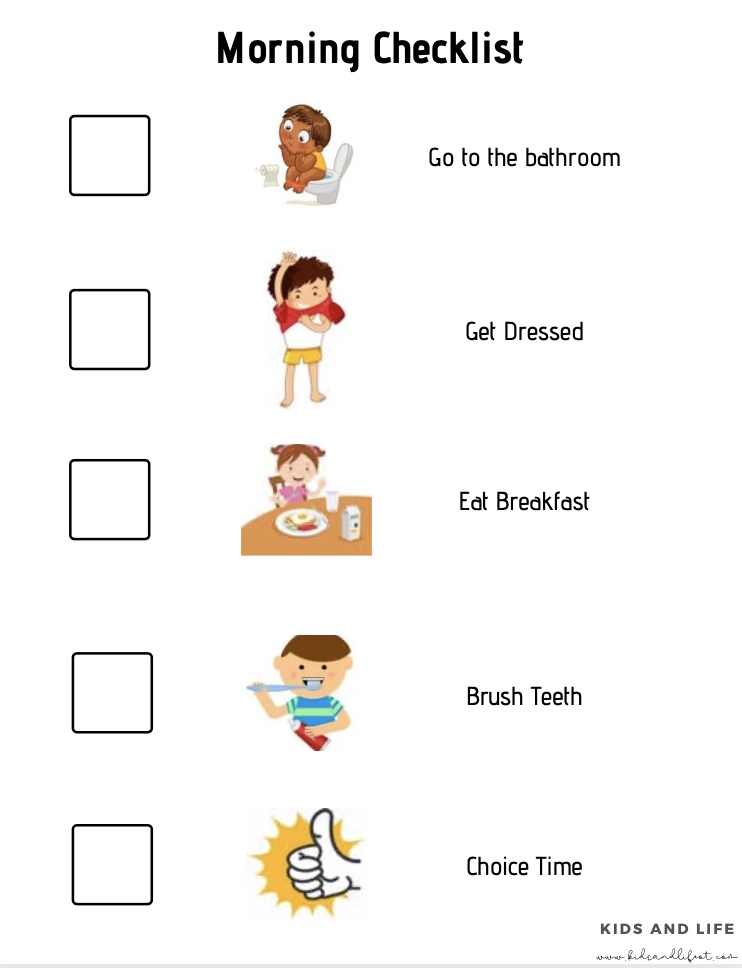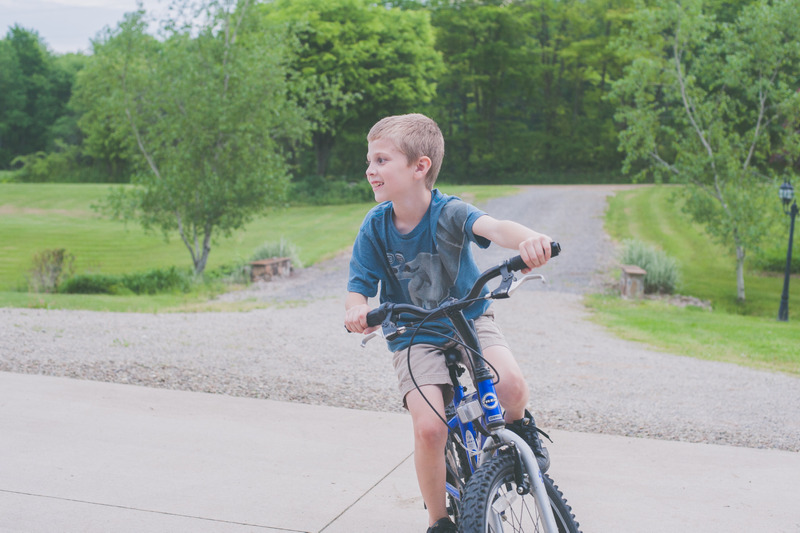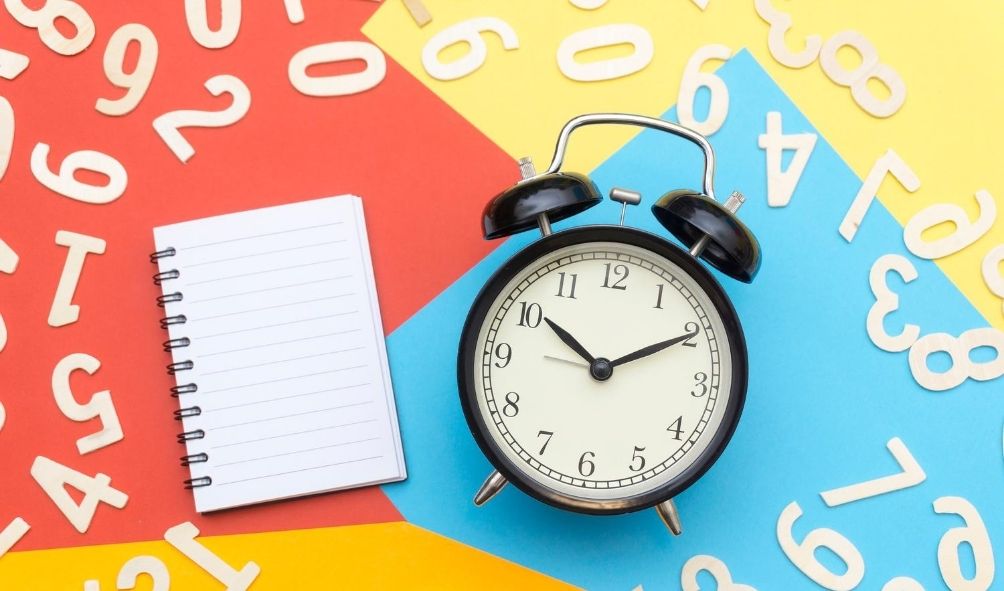Let’s face it, every individual operates differently. It depends on the day, the situation, and how we feel in a moment. Our learning style and how we process information helps us understand what is going on and what is expected of us. For children, we adults are pretty much controlling their entire day, aside from the times that they are engaging in free play. This is not a negative thing, but it means that kids are having to understand expectations, follow directions, learn, and adjust constantly throughout their day. Add in some non-preferred tasks, anxiety (A PANDEMIC!!!), hunger or fatigue, and then a change in plans, and it is enough to make a child lose it! I mean, I tend to lose it in these situations!
So how can we help children in these moments?
Additional supports that are targeted to the child’s needs and processing styles can go a long way. Extra “supports” can mean a number of things, which we will get into in a minute. But before we go to the What, let’s consider the Why.
Here are some reasons why a child may need additional support for a given day (please note that this is not an exhaustive list):
- They have difficulty maintaining attention to a task. This may be due to a formal diagnosis such as ADD, ADHD, a learning disability, Autism Spectrum Disorder, anxiety, or it could be situational.
- He processes verbal, written, or auditory information poorly. Some people are just better with visual information or actively doing something in order to understand. Even if the child in your life is verbal, their expressive language may be better than their receptive language, particularly when it comes to processing a situation or direction.
- Her cognition is that of a 2-7 year old. At this age, they have not yet reached the developmental ability to reason through situations or even think logically. They think of things in very concrete ways and are unable to understand the perspectives of others.
- She requires more or less sensory input in a given moment. Consider the situation at hand and your child’s sensory processing abilities: is she hypersensitive to certain types of input or does she need more input to better understand the environment?
- He is rigid and likes sticking with a routine– and then the routine has to change for whatever reason. Some individuals are more rigid than others due to personality or a particular diagnosis. And then having to adjust to change IS a big deal to them.
- Additional anxiety or stress. Picture this: your child is not able to go to school, is currently not seeing friends or grandparents, their parents are showing additional stress at home, we keep talking about a virus and not understanding what it actually means or will look like going forward… anyone? But also, some children experience more anxiety than others in general.
What this means for their brain
The above factors can contribute to a slower processing speed. Brains may not be able to retain information, or they may be unable to understand why a situation or expectation has changed. When our brains are in overdrive, we are unable to access executive functioning skills, which are your higher level thinking abilities. This includes organizing, reasoning, memory, emotional regulation to name a few.
So you give a verbal cue to your child, and he does not do it. You ask again, he continues playing. You ask with a louder voice, more stern this time, and you’re losing your patience. He agrees and begins to transition, but again gets distracted. He is unable to retain the information from the instruction and initiate what he needs to do to carry out the task.
Oy. This is all too familiar to many of us. So what do we do? How can we help these kiddos? Aside from pulling out our hair, yelling, and becoming more upset ourselves, consider their day and situation as a whole.
Here are 9 ways to provide your child additional support to get them through their (and your) day
1. Provide structure and routine. Children love and thrive off of structure and routine. They actually need boundaries and expectations and then for you to reinforce them lovingly. This is how they learn. With structure and routine, you are establishing consistency in everyone’s day. When a child knows what to expect, things go more smoothly.

2. Use schedules and visuals to support understanding. Use words, lists, or pictures to make a schedule for any portion of their day. Remember when we were talking about their concrete thinking? Kids can associate symbols to actions. The use of pictures can be greatly beneficial for this. This can be incredibly low tech: use a piece of paper and crayon, an easel, dry erase board/window/mirror, chalk board. This can be a fun way to sneakily incorporate drawing too: have the child cross off the items as you do them. I created a visual schedule for nearly all of my therapy sessions for kids ages 3-7 years old. And truly, they went better! For slightly more involved visual schedules, check out this website that takes pictures and you can plop them into a schedule! And if you are really wanting to get creative and in depth, there are programs you can purchase to create many visual supports!

3. Utilize movement breaks. Kids need movement. Adults need movement. Moving your body offers input to your proprioceptive and vestibular sensory systems to assist with regulation, body awareness, and attention. When kids don’t get this, they can have difficulty attending to tasks and they may seek it out in less appropriate ways and less optimal times (jumping off the couch, wrestling with his brother, getting up from the table when they are supposed to be attending to homework). Instead, incorporate times and activities for them to naturally move and get input. Shoot for every 2-3 hours.
*This post contains affiliate links and I may receive commission when you click on links and make purchases. However, this does not impact the price you pay!

4. Allow for downtime (away from screens). Carve out time to read, do puzzles, listen to audiobooks, draw freely. Whatever this looks like for your child. Consider a sensory break away from sensory input. Use a pop up tent or fort with low lights. My dad has a cool space under his pool table that he draped a blanket over the top and the kids can crawl under and play in there… #coolgrandpaalert! Consider calming fidgets or ones with visual input like these bubble drips, giant slinky, or pin art. Set a timer with zero expectations and let them be. This allows for their sensory system to have a break from extra sensory input and allllll of the things they are processing throughout the day.
5. Consider foreshadowing events. When kids know what is coming, it is easier. You may notice kids seeking this out by asking a lot of questions of what is to come. You can foreshadow events in a few ways: verbally and visually. It helps to repeat foreshadowing often. I even do this with my 2 year old. Their receptive language is appropriate for this! Consider a common phrase or tune that you usually use. For example state frequently:
“We’re going to Grandma’s house today. Grandma, Grandpa, and your cousins will be there. You will play with toys and read books. It might be loud. If it is too loud, you can go into the bedroom with Mom. We will take a break together. Then we’ll go back out and play with your cousins and have fun! “
You can also use tools such as social stories or video modeling. Both of these could be a post in itself, so I’ll be brief: these are ways to teach a skill or desired response in a situation, but they use different mediums to learn. With a social story, typically the child is the main character, and you tell the story of what will happen and what the desired outcome is. Video modeling is similar, using a video. You can use a video when you know the child is capable of doing something and you can practice it in order to capture it on video. A social story may be helpful when you do not know what the child’s performance or reaction will be. Check out my recent post and Social Story for COVID 19!
6. Assure healthy snacks and plenty of water to drink. This is a way to at least know hunger and thirst are controlled. When our physiology is taken care of, our brains and emotions have a better chance of working. This is called a hierarchy of needs.
7. Offer a space to discuss concerns and worries. Allow them to verbalize their struggles. This may not happen particularly if your child is at a certain age, is minimally verbal, or is just unable to express their emotions or abilities. But if they are, be there and listen without judgement. This is a specific resource that can be helpful in understanding how to talk to your kids about the current pandemic at many ages.
8. Reinforce positive outcomes with praise, attention, rewards. Celebrate successes!
9. Take care of YOU too. When our kids have a hard time, we have a hard time, which typically continues the cycle. Woof. Keep attending to your basic needs, and even add some of the above supports for you! (I need to drink water, exercise, take breaks, and make lists for my day too!) And good grief, give yourself some grace. These things are hard! Taking care of yourself makes you an optimal caregiver during challenging situations.
Please, share! I want to hear from you! What are some beneficial supports in your child’s life and how do you use them?
https://www.cdc.gov/parents/essentials/structure/index.html
https://www.verywellmind.com/preoperational-stage-of-cognitive-development-2795461
https://www.simplypsychology.org/maslow.html
https://infoaboutkids.org/blog/parents-and-covid-19-helping-your-children/
https://connectability.ca/visuals-engine/





These are great tips! Thanks for sharing. We talk through everything and our feelings about it, allow control over little decisions, and take breaks.
Yes! Thank you for sharing, Mindy. It is so important to talk through everything, even at a young age. I love giving choices and control over little things. I truly believe it makes a difference in our day. And I swear my daughter gets a little prouder when I let her have some control. Thank you for sharing!!